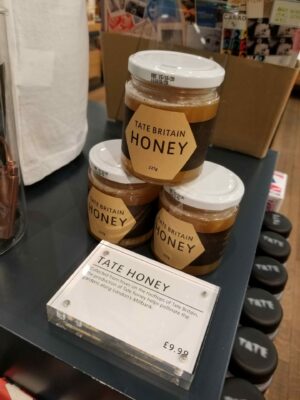Editor's Note
Today’s post is cowritten by Rebecca Brenner Graham and Libby Tyson, who earned her MA in Museum Studies from the University of San Francisco and is currently a PhD student in the Department of History at American University. She is also a museum and archival contractor based in Washington, DC. You can follow her on Twitter @LibbyTyson3. Today, June 28, is also Libby’s birthday!
At the end of most museum trips, visitors meander through the museum gift shop, allowing their eyes to dance over Gustav Klimt scarves, Abraham Lincoln bobbleheads, or environmentally themed crystal growing kits in the children’s toy section. Museum gift shops also often sell books relating to their collections, especially in history and art museums. What would happen if each museum visitor viewed the gift shop space as more than a fun commercial zone at the end of the museum trip? How can visitors reimagine a museum’s gift shop as an extension of the museum’s exhibition space?
I (Rebecca) enjoy investigating which books museum gift shops choose to sell. Once I needed to buy Black Reconstruction by W. E. B. DuBois. I had read an article or blog post about it by Rob Greene, and for some reason I wanted to buy it in person. After checking the majority of bookstores in DC – Kramers, Politics & Prose, Busboys and Poets, and more – I finally checked the Smithsonian National Museum of African American History & Culture gift shop. Success! They had it. I bought it. DuBois’s narrative of Black Reconstruction being almost a success if not for the Compromise of 1877 was part of what the African American history museum was selling. After all, museum gift shops are a forgotten exhibition space. Every item available for purchase in a museum gift shop is curated to shape visitors’ overall museum experiences and to generate museum revenue, but, as Vox Media has recently reported, each museum relies on different strategies for stocking its gift shop shelves. Regardless of strategy, museum gift shops and museums themselves, as public historians have made increasingly clear, are not neutral. Even museum gift shops that sell items either contingent upon or unrelated to a museum’s current exhibitions craft a narrative.
While questioning the narrative that a museum gift shop is advancing, visitors should also remember that the museum gift shop is a commercial space. For a museum maintaining nonprofit tax status, this commerciality positions its gift shop as potentially subject to unrelated business income taxes (UBIT), meaning that the museum gift shop’s revenue can be taxed at a rate different from the rate at which the nonprofit activities of the museum are taxed. In these cases, the museum gift shops that qualify for UBIT regularly conduct activity that falls outside the scope of the reason for the museum’s nonprofit tax exemption. This taxation categorization aligns museum gift shops with their commercial counterparts and begs for museum visitors also to examine the businesses around famous museums, art, and historical landmarks. When I (Libby) first visited Alcatraz Island, which is now operated by the U.S. National Park Service, I was amazed at how many shops along San Francisco’s Embarcadero specifically sold Alcatraz- and prison-themed tourist items, and I began to question where exactly the influence of a landmark and its museum gift shop ends. The American Alliance of Museums highlights the economic power that museums grant to their communities; in San Francisco’s Embarcadero, just the proximity to Alcatraz provides local merchants commercial opportunity and an endless supply of tourists eager to purchase souvenirs.
Determining the boundaries of the space between narrative interpretation and commercialism that museum gift shops inhabit can be murky because “museum” lacks a singular, cookie-cutter definition. Indeed, defining a museum can be difficult, and its gift shop is both interconnected and significant in itself. As museums are opening and easing their pandemic restrictions, don’t forget the last exhibit: the gift shop. On the surface, visitors might assume that the museum interprets a narrative and that the gift shop is its commercialist afterthought. However, this forgotten exhibit actually continues what the other exhibits are already doing: selling and privileging a specific narrative.

“Collected from the hives on the rooftops of Tate Britain, the production of Tate honey helps pollinate the gardens along London’s Millbank.” Photo by Libby Tyson at the Tate in London.

0